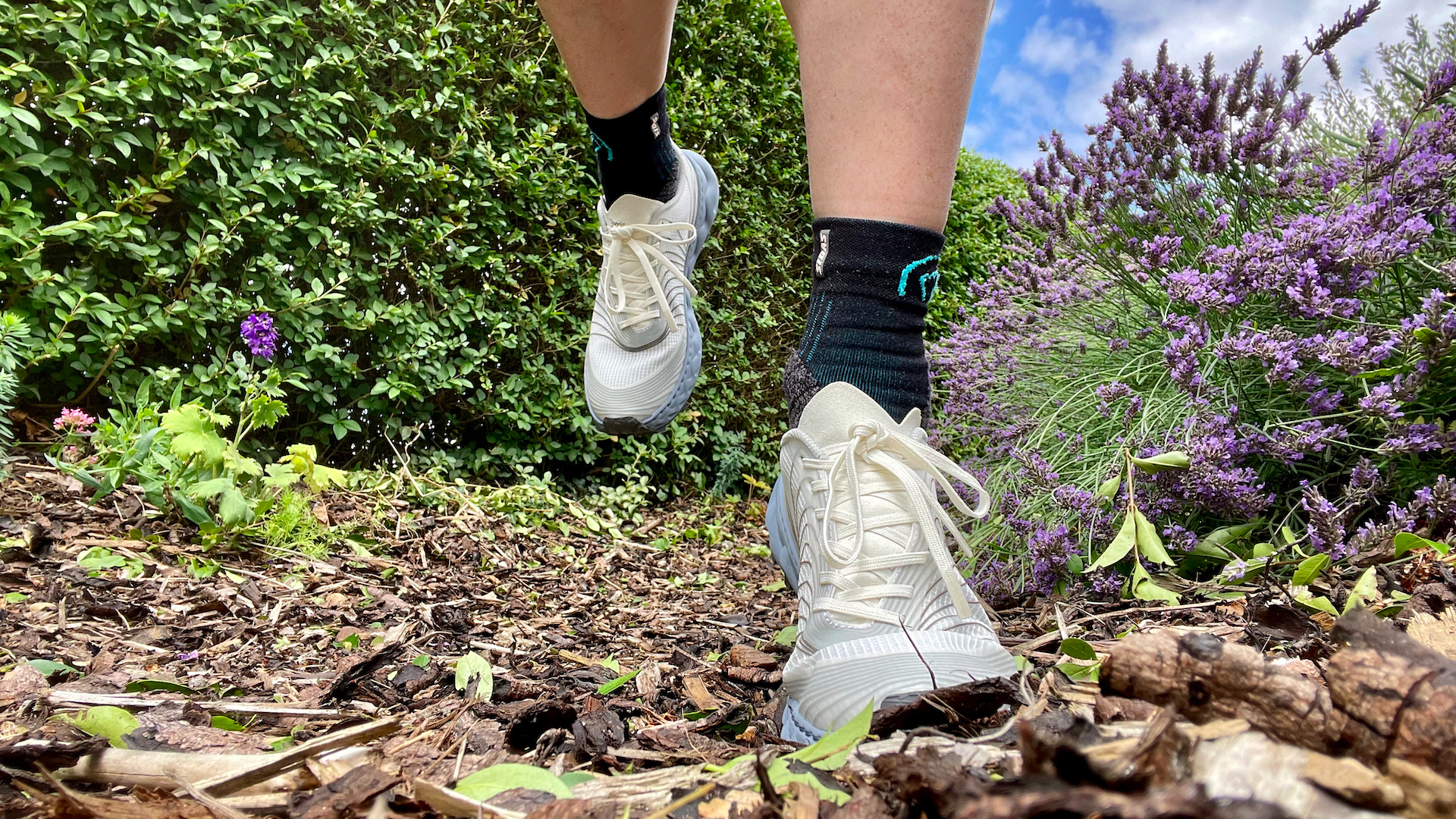Incline vs distance: what's better training for runners?
Both uphill running and long runs have benefits that may help you meet certain running goals

Running is already hard, but we runners just love to find ways to make it harder. If your adventures usually take place in road running shoes on tarmac, maybe you’re slowly inching up the mileage week after week. Then again, if you love to hit the soft stuff in trail running shoes, perhaps you’re seeking steeper slopes to climb.
But when it comes to improving your performance, should you be increasing your incline, or your distance, or both? Most of us will naturally gravitate towards one or the other, but both uphill running and long runs have benefits that may help you meet certain running goals.
Let’s look at the benefits of running uphill vs long runs to find out which one you need to be doing more of.

The benefits of running uphill
If you’re always running on the flat and wondering why you’ve plateaued, you’re definitely going to want to give the hills a try. When you’re running uphill, you have practically zero momentum to rely on, which means that your leg muscles like your calves, hamstrings, glutes, quads and hip flexors have to do much more work than usual to power you forward.
Running uphill is great for strengthening your leg muscles with less impact than running downhill or even on the flat, which can serve you when it’s time to sprint to the finish and may also reduce your risk of injury, though you’ll want to take care when running downhill again. As we explain in our article on the benefits of hill running, the form required can also help to strengthen your arm and core muscles.
In addition, as soon as you start running on an incline, you’ll notice that your heart rate increases much more than when you’re running on the flat. It turns out that running uphill is amazing training for your cardiovascular system and for increasing aerobic endurance too, and if you make it part of your regular training program, you may find that it makes you a faster runner and improves your endurance. If you try to keep up your pace on uphill stretches rather than slowing down, it can make for an effective form of interval training and help to improve your VO2 max. Plus, you’ve got the added bonus that when you get back to level ground, everything suddenly seems easier.
When picking a slope to test out your legs on, obviously a gentler incline will be easier than a steep one, and may reap fewer of these benefits, but interestingly, researchers from CU Boulder did discover that there’s a fairly large range of inclines that require the same amount of energy expenditure – anything between 20 and 35 degrees is considered the “goldilocks plateau.” If you're going up really steep slopes, you'll want to consider using running poles to help you.
Advnture Newsletter
All the latest inspiration, tips and guides to help you plan your next Advnture!

The benefits of long runs
While an incline is an incline, making it easier to study the benefits of uphill running, what exactly constitutes a long run is much more subjective.
If you’re gearing up for a marathon, your longest training run will ideally be 21 miles, whereas if you’re working your way up to your first 5k, your long run will be going for 30 minutes without stopping. This makes endurance running harder to research, however there are some obvious benefits.
Increasing distance helps you to build both physical and mental stamina and endurance. Physically, it teaches your body to become more efficient, relying on fat rather than glycogen for energy stores, according to a paper published in Exercise and Sport Sciences Reviews. Mentally, it’s good training for spending hours on the trail if you’re planning on an endurance race, and arguably that kind of prolonged suffering could help you to tackle all sorts of obstacles in life.
If you’re increasing your distances, it’s not recommended that you add more than 10 percent each week, to give your body time to adapt, so it's a good idea to use a GPS watch to track your progress so you don't overdo it.

What's better training for runners?
The best training, of course, depends on what you’re preparing yourself for. If your goal is to go for long distances, such as a marathon, then of course longer distances need to be part of your training regime to help you build endurance.
If you want to get better at sprinting or are planning on doing more trail running, then you’ll want to practice running uphill, even if it means you end up walking the uphills a lot of the time, since running on flat terrain doesn’t really train your muscles in the right way for this.
If you want to improve your overall fitness and become a better runner all round, or be able to tackle more types of terrain, then obviously making sure your routine includes both hills and long runs is the best course of action. And finally, take care – it’s easy to overdo either form of training and the last thing you want is to have to sit on the bench this season.
Julia Clarke is a staff writer for Advnture.com and the author of the book Restorative Yoga for Beginners. She loves to explore mountains on foot, bike, skis and belay and then recover on the the yoga mat. Julia graduated with a degree in journalism in 2004 and spent eight years working as a radio presenter in Kansas City, Vermont, Boston and New York City before discovering the joys of the Rocky Mountains. She then detoured west to Colorado and enjoyed 11 years teaching yoga in Vail before returning to her hometown of Glasgow, Scotland in 2020 to focus on family and writing.

